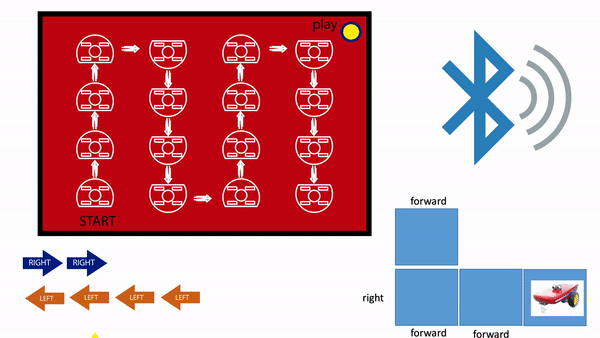Week 1 assignments:
Principles and Practices:
From Fab Academy 2018 assignments
1. Plan and sketch a potential final project.
Have:
Final project sketch
Project description
Plan and Sketch a Potential Final Project
The project consists of creating of a prototype of Educational Electronic Toy which aim is the teaching of basic programming for children of all ages; It relates learning with fun, simplifying programming, so children through the game that is an innate activity, they could adopt programming knowledge and at the same time involving them with the world of technology.
The proposed didactic toy involves children basically with three concepts of programming which are: instruction, sequence and control structures (cycles and conditions); which are the key concepts when they learn directly the programming approach. The purpose of the game is to program sequences of instructions in a tangible programming interface to guide a robot toward a destination or a proposed goal by way of challenge, so that children develop their creativity and imagination, and at the same time they will be involved in programming in a playful way.
SKETCH

Learning Outcomes
This prototype will be manufactured using different digital fabrication technologies such as 3D printing, laser cutting and engraving, CNC machining, molding and casting, electronic design and others. It contains a logic of tangible programming; the same that allows children to program a robot wirelessly, only inserting small instruction sheets, which gives simplicity at the time of the action of playing and learning to program.
This project is inspired by Primo Toys, my main contribution in this project is in the incorporation of programming functions like conditions and cycles that allow to resemble the tangible programming to a real programming, additionally I add a mobile application that allows to control the robot with programming functions from any cell phone or smart device.
JEDPRO TOY

Activity planning
To do the planning of activities for the development of the project use the GanttProject software